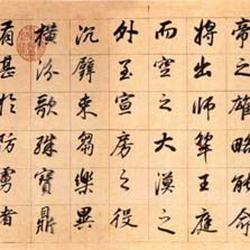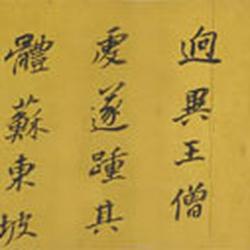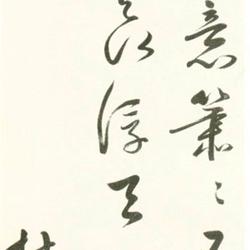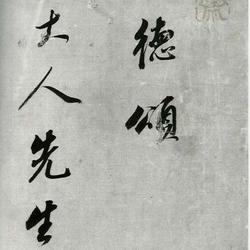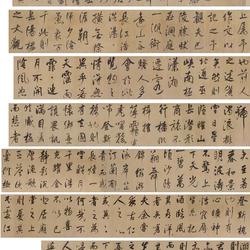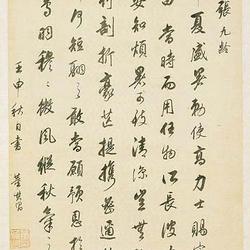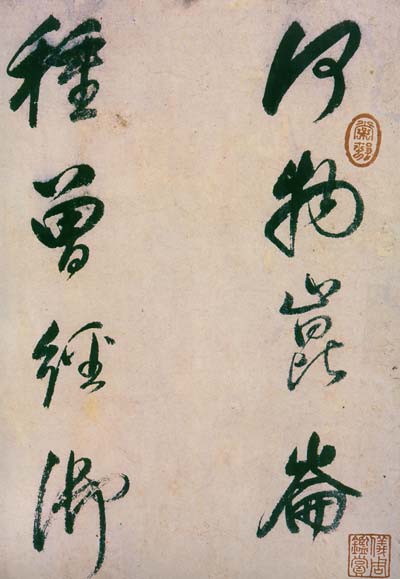
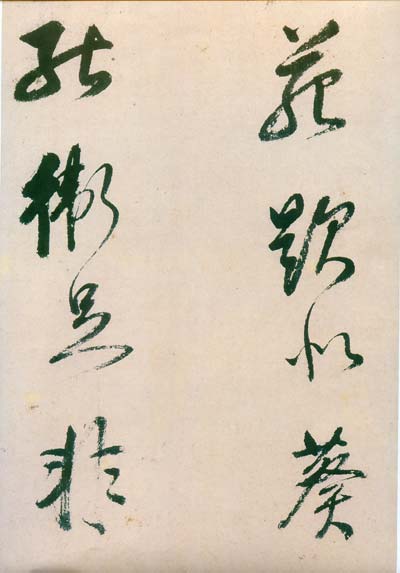
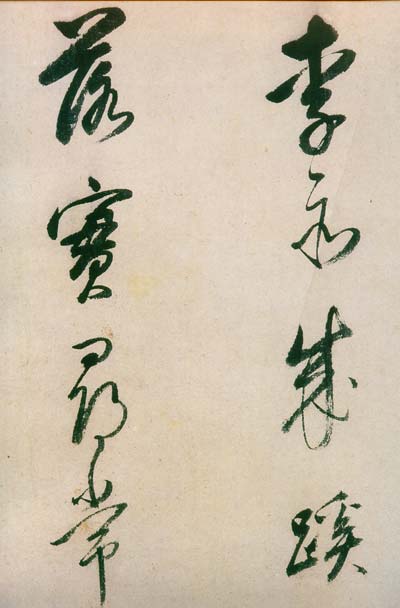
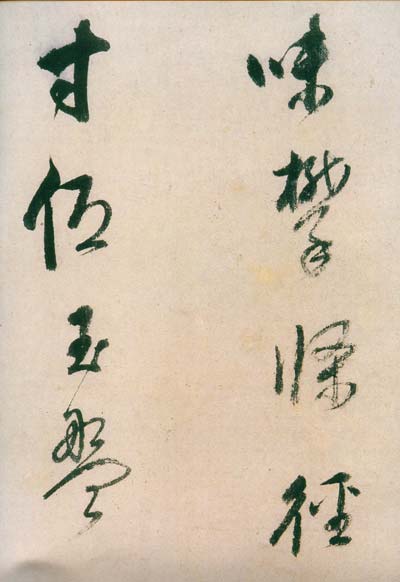
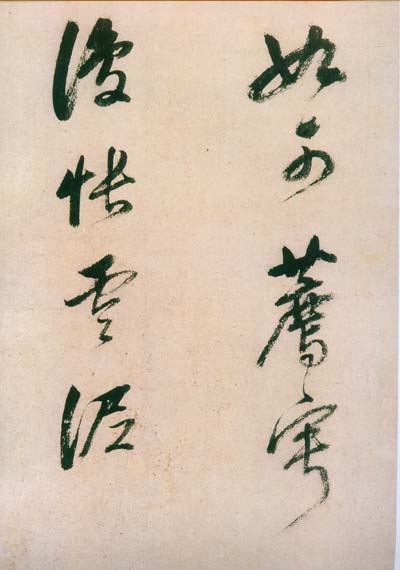
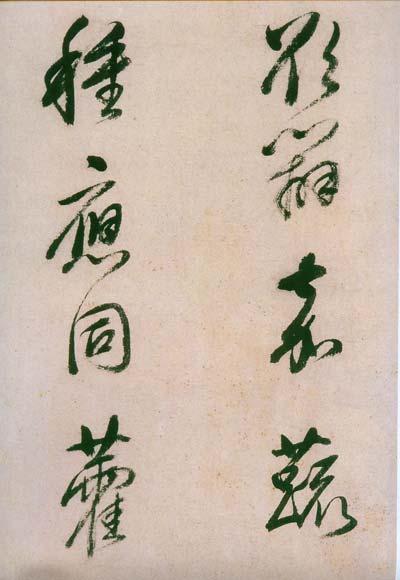
Long scroll of purple eggplant poems with running cursive 414X24.5cm (the last work. Written at the age of 82)
Attached is the preface to the original book: Dong Qichang's "Purple Eggplant Poems" in cursive scroll
Author: unruly
This is a long scroll called "Purple Eggplant Poems" written by Dong Qichang. It is 414 centimeters long and 24.5 centimeters high. It is fresh, elegant, and exquisitely beautiful, but it is also sophisticated. Although it cannot be said to be Dong's best work, it is still his superior masterpiece. The works in this volume are sparse and leisurely, with light singing and dancing. It is a typical portrayal of the spiritual life of literati and officials who do not care about food and clothing, but express their feelings and calligraphy.
Dong Qichang (AD 1555-1636), named Xuanzai, nicknamed Sibai, and also nicknamed Xiangguang Juqi, was a native of Huating (now Songjiang, Shanghai).
In the 17th year of Wanli in the Ming Dynasty (AD 1589), he became a Jinshi, selected common people, and was awarded the title of editor and editor. He was promoted to the Minister of Rites and was given the posthumous title Wenmin. He is talented and handsome, good at talking about theory and theory, but rarely good at calligraphy and painting. He copies original works and even forgets to sleep and eat. "History of Ming Dynasty." "Ai Yuan Zhuan" records: "At the same time, those who were famous for their good books were Linyi Xing Dong, Shuntian Mi Wanzhong, and Jinjiang Zhang Ruitu. At that time, they were called 'Xing Zhang Mi Dong', and also called 'Nandong Beimi'. However, these three people If we don’t catch his prosperity, it’s too far away.” This argument seems to be controversial nowadays. If we say that Xing Dong and Mi Wanzhong’s calligraphy is inferior to Dong Qichang’s, a discerning person will know it at a glance. But when it comes to Zhang Ruitu, “It’s too late if we don’t catch his prosperity.” "I'm afraid it's no longer accurate. Whether it is Xu Wei before Dong Qichang or Zhang Ruitu, Huang Daozhou, Wang Duo, Ni Yuanlu, and Fu Shan who followed him, they are all the founders of the sect. Their styles are very different from the beautiful Dong Qichang, and they have made outstanding achievements. In terms of comparison, Zhang Ruitu used his lateral forwards to the extreme, used horizontal support to gain momentum, and made his own moves. Zhong and Wang found a new path to compete with Dong.
"When I was seventeen years old, I first studied calligraphy under Yan Pingyuan's "Duobao Pagoda" and then changed to study under Yu Yongxing's book. I thought that Tang calligraphy was not as good as that of Jin and Wei, so I imitated "Huang Ting Jing" and Zhong Yuanchang's "Declaration Table" and "Li Ming Table" ", "Huanshi Tie" and "Bingshe Tie" every three years, claiming to be following the ancient times, no longer regard Wen Zhengzhong and Zhu Xizhe as the corner of their eyes. However, they have not paid attention to the spiritual principles of calligraphers and only adhere to the rules. Just like that. After traveling to Jiaxing, I was able to see all the authentic works in Xiang Zijing's family collection. I also saw Youjun's "Official Slave Notes" in Jinling. I realized that I had made false promises in the past, but since then I have gradually made little progress... Now I will be twenty. For seven years, I just drifted with the waves, and the calligraphy and calligraphy path was as difficult as this." This self-narration not only shows the direction and trajectory of his study of calligraphy, but also importantly explains the great success he obtained from the great collector Xiang Zijing's house. The fact that after seeing the authentic ancient calligraphy opened my eyes and made great progress in learning calligraphy. The art of ancient people was not as advanced as our current photoengraving and printing technology. There were many published books and they could compare the pros and cons. It was already very good for them to see an ancient rubbing (perhaps still out of shape), not to mention it was an authentic work with fine paper and fine ink. Or copy, how important this is for broadening his horizons and improving his techniques! After that, Dong Qichang also studied the writing styles of Li Yong, Xu Hao, Liu Gongquan, Yang Ningshi, Su Shi, Mi Fu and other predecessors. He worked tirelessly and studied meticulously, and finally finally It became a family of its own and created the Dong style style of elegance, elegance and freshness.
Dong Qichang pursued plain calligraphy throughout his life and paid attention to the use of brushes. He also said: "Compared with Zhao Mengfu, Yu Shu and Zhao Mengfu, each has its own shortcomings and strengths. The lines are dense and thousands of characters are the same, but I am not as good as Zhao. If I imitate the past dynasties, Zhao can get ten of them, and I can get it." Seventeen. Also, because Zhao Shu is familiar with the vulgar style, and because my calligraphy is beautiful and beautiful, I often direct my thoughts. When I make my thoughts, Zhao Shu is also inferior, and the second person who makes the thoughts is young." In this passage, Dong Qichang is proud of his copying. Judging from the large number of extant works, his kung fu is not as unattainable as he boasted, but it is still profound. Dong Qichang had a high official position and a wealthy family. He had a large collection of paintings and calligraphy from past dynasties, and many of them had passed through his eyes. Over time, his appreciation ability was beyond the reach of ordinary people. He imitated the works of Yan Lugong and Mi Yuanzhang, with profound skills, both original intention and his own intention, complete spirit and compelling spirit. It is a rare masterpiece, and he also benefited the most from these two families, so he can Said to be the backbone of his calligraphy.
In the early Qing Dynasty, the emperors were so fond of Dong Qichang's calligraphy that good people rushed to follow it and imitate it, and it became popular all over the country. The imperial court of the Qing Dynasty also collected his works, and their prices were increasing day by day, making them prized as famous pieces.
This volume of "Purple Eggplant Poems" is a long cursive scroll. Dong Qichang signed the date as "Bingzi March Wang", which is the ninth year of Chongzhen in the Ming Dynasty (1636 AD). Dong Qichang was eighty-two years old and died on the 11th of this year. Died in month. Therefore, this volume is truly Dong Qichang's final work, which is extremely precious.
The calligraphy of this volume was written by Mr. Xie Zhiliu as the preface and Mr. Yang Renkai as the postscript, which is the icing on the cake.

